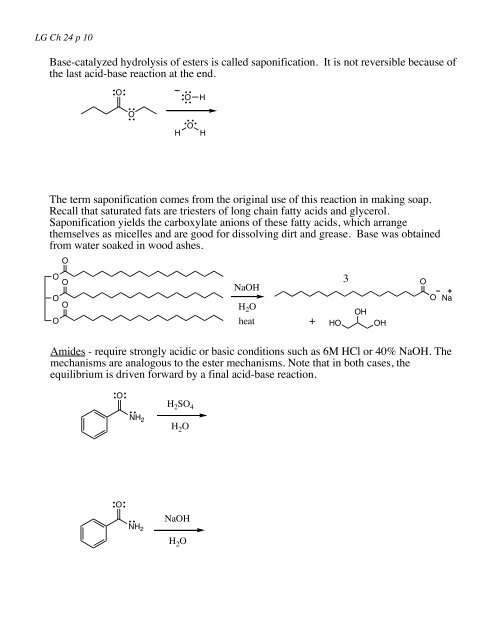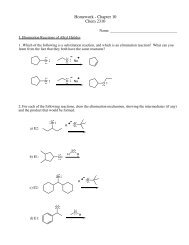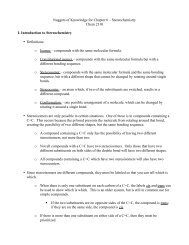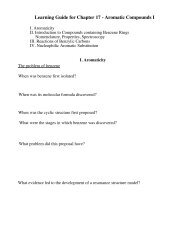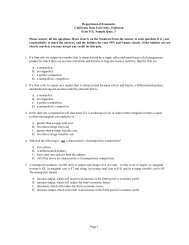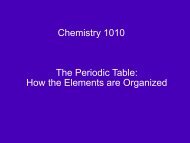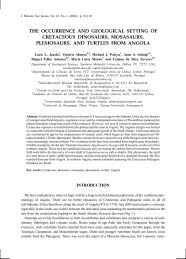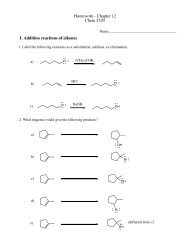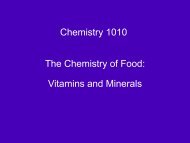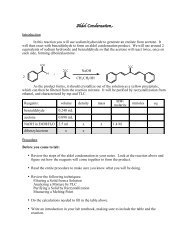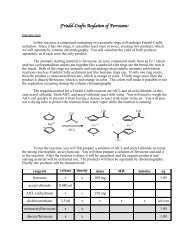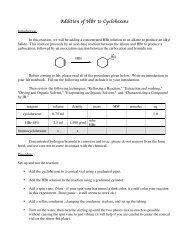Learning Guide for Chapter 24 - Carboxylic Acid derivatives
Learning Guide for Chapter 24 - Carboxylic Acid derivatives
Learning Guide for Chapter 24 - Carboxylic Acid derivatives
- No tags were found...
Create successful ePaper yourself
Turn your PDF publications into a flip-book with our unique Google optimized e-Paper software.
LG Ch <strong>24</strong> p 10Base-catalyzed hydrolysis of esters is called saponification. It is not reversible because ofthe last acid-base reaction at the end.OOHOHOHThe term saponification comes from the original use of this reaction in making soap.Recall that saturated fats are triesters of long chain fatty acids and glycerol.Saponification yields the carboxylate anions of these fatty acids, which arrangethemselves as micelles and are good <strong>for</strong> dissolving dirt and grease. Base was obtainedfrom water soaked in wood ashes.OOOOOONaOHH 2 Oheat+HO3OHOHOONaAmides - require strongly acidic or basic conditions such as 6M HCl or 40% NaOH. Themechanisms are analogous to the ester mechanisms. Note that in both cases, theequilibrium is driven <strong>for</strong>ward by a final acid-base reaction.OH 2 SO 4NH 2H 2 OONH 2NaOHH 2 O


